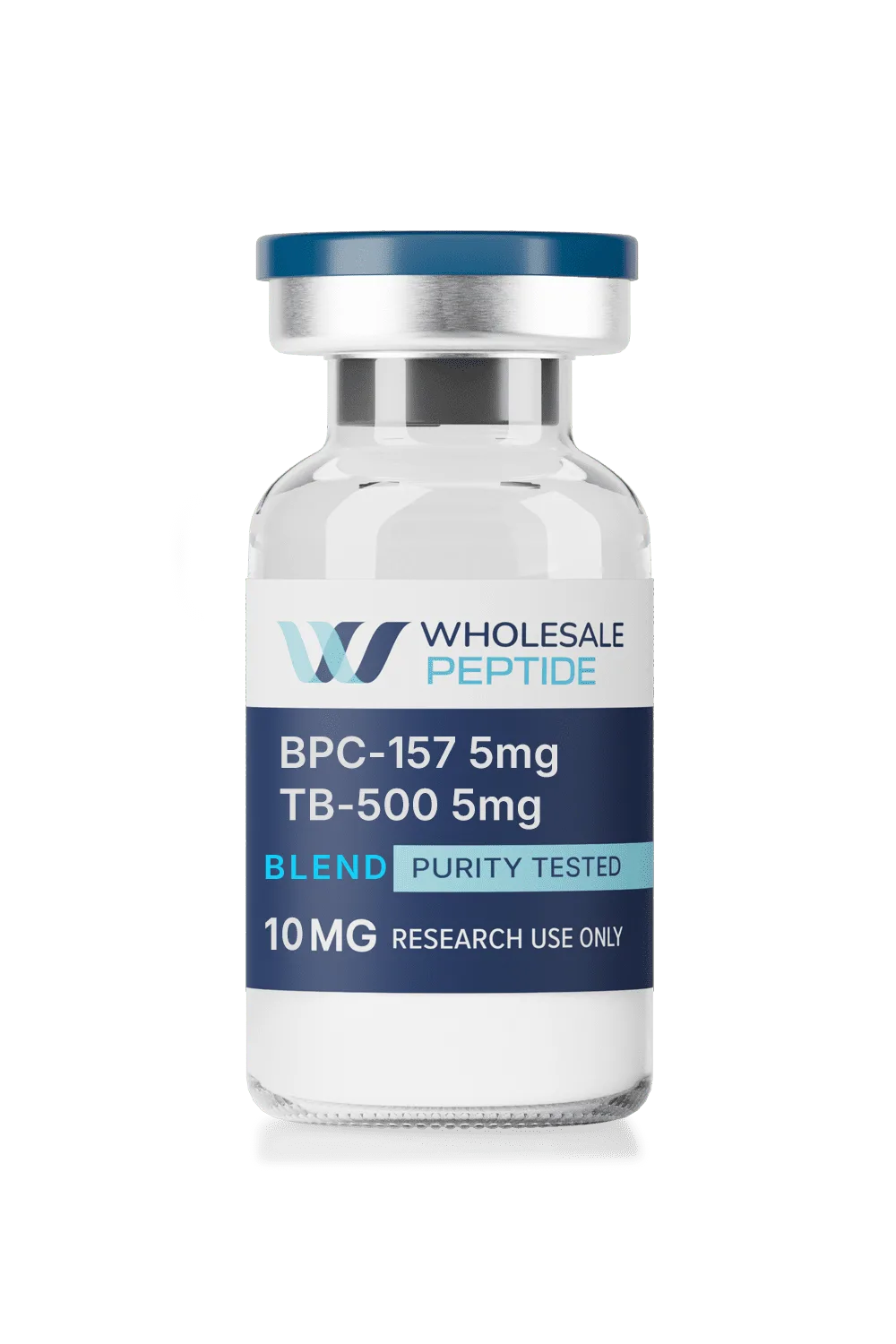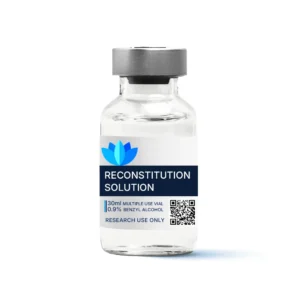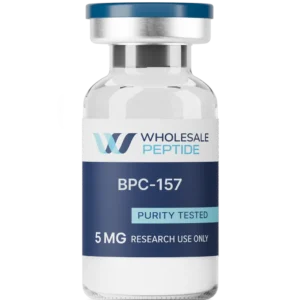Buy BPC-157 and TB-500 Blend at Wholesale Peptide
In the lab, the combination of these specific peptide compounds is getting a lot of attention from researchers studying tissue repair and cellular processes. The BPC-157 and TB-500 blend is also known as the wolverine blend in research circles and is an area of interest for researchers studying wound healing and cell migration in controlled lab settings.
These compounds have caught attention due to their unique molecular structure and potential mechanisms of action in different experimental models. For researchers looking to buy BPC-157 and TB-500 blend for lab use, understanding the molecular basis and research applications is key to designing meaningful studies.
Molecular Structure of BPC-157 and TB-500 Blend
The molecular composition of this peptide blend shows the biochemistry behind these research compounds. Understanding the exact structure allows researchers to better understand how these compounds work in experimental settings.
BPC-157 Amino Sequence: Gly-Glu-Pro-Pro-Pro-Gly-Lys-Pro-Ala-Asp-Asp-Ala-Gly-Leu-Val
BPC-157 Molecular Formula: C62H98N16O22
BPC-157 Molecular Weight: 1419.55 g/mol
TB-500 Amino Sequence: Ac-Ser-Asp-Lys-Pro-Asp-Met-Ala-Glu-Ile-Glu-Lys-Phe-Asp-Lys-Ser-Lys-Leu-Lys-Lys-Thr-Glu-Thr-Gln-Glu-Lys-Asn-Pro-Leu-Pro-Ser-Lys-Glu-Thr-Ile-Glu-Gln-Glu-Lys-Gln-Ala-Gly-Glu-Ser
TB-500 Molecular Formula: C212H350N56O78S
TB-500 Molecular Weight: 4963 g/mol
BPC-157 also known as body protection compound is 15 amino acids sequence that researchers suggest may interact with various cellular targets involved in tissue healing. TB-500 is a synthetic fragment of the naturally occurring thymosin beta-4 protein that has been shown to move cells and grow blood vessels in lab models.
Mechanism of Action
Research into the cellular pathways of this peptide combination shows complex interactions that continue to fascinate scientists studying regeneration and repair. Both compounds in the system seem to activate multiple pathways that researchers have found to be important for tissue repair.
Studies on BPC-157 have shown that this compound may upregulate growth hormone receptors in tendon fibroblasts at mRNA and protein level. Researchers suggest this peptide may also promote collagen synthesis and support various cells involved in the healing process. One study found that BPC-157 activates major growth and repair pathways including JAK2 and integrin linked kinase pathways.
The mechanism of action of TB-500 is centered on its ability to regulate cell migration especially in endothelial cells and keratinocytes. Research suggests this compound may support angiogenesis, the formation of new blood vessels while also promoting cell survival and movement necessary for tissue repair. The peptide targets wound environment where it may stimulate cell movement and regeneration.
When researchers combine bpc 157 tb 500 in the lab, studies suggest the blend may have synergistic effects. This combination supports multiple pathways at the same time, potentially enhancing the overall healing process through different mechanisms of action.
Benefits of BPC-157 and TB-500 Combination
Lab studies on this peptide blend have shown several areas where researchers suggest these compounds may be beneficial in experimental models. The combination supports tissue healing across multiple tissue types in mouse models and other research systems.
Research suggests the following applications in the lab:
- Tissue regeneration: Both peptides may stimulate repair in tendons, ligaments, muscle tissue, nerve structures and soft tissues
- Wound healing: Lab models suggest the combination may accelerate recovery from experimental injuries
- Anti inflammatory: Both compounds may modulate inflammatory response in research settings, reducing inflammatory markers
- Neuroprotection: Animal data suggests BPC-157 may have neuroprotective effects in experimental models
- Angiogenesis: TB-500 research highlights its promoting effect on blood vessel growth
- Muscle recovery: Studies suggest the blend may support recovery in muscle tissue after experimental injuryThe research suggests this combination may achieve these effects through growth factor regulation, cell survival mechanisms and natural healing pathways. Researchers have found the peptides act on multiple cells at the same time, a comprehensive approach to tissue repair in lab models.
Research
Scientific studies on these compounds have been focused on preclinical research using animal models and in-vitro lab systems. The research is ongoing as scientists explore the mechanisms and applications of this peptide combination.
Animal studies on BPC-157 have shown its ability to support healing in tendon, ligament, muscle, nerve and gastrointestinal tissues. Research suggests these effects are through increased growth factor activity and collagen deposition in experimental models. One study on tendon healing found that BPC-157 treatment resulted in increased tendon outgrowth and better tissue organization compared to control groups.
TB-500 research has shown promising results in mouse models for soft tissue repair, cardiac tissue recovery after experimental injury and ocular wound healing. Studies on applied physiology have shown TB-500 may enhance cell migration and support new blood vessel formation in lab settings.
| Research Area | Findings/Details |
|---|---|
| BPC-157 Findings | Interaction with cellular targets involved in tissue healing; upregulates growth hormone receptors; promotes collagen synthesis; activates growth and repair pathways (JAK2, integrin linked kinase). |
| TB-500 Findings | Regulates cell migration in endothelial cells and keratinocytes; supports angiogenesis and cell survival; targets wound environments to stimulate cell movement and regeneration. |
| Tendon Healing | BPC-157 increases tendon outgrowth and improves tissue organization in experimental models. |
| Tendon Fibroblasts Activity | BPC-157 upregulates growth hormone receptors in tendon fibroblasts at mRNA and protein levels. |
| Cell Migration | TB-500 regulates cell migration, facilitating movement of endothelial and immune cells to injury sites. |
| Wound Healing | The blend may accelerate recovery from experimental injuries by promoting tissue repair and regeneration. |
| Closure Rates | Studies indicate increased wound closure rates with peptide treatment in animal models. |
| Angiogenesis | TB-500 promotes blood vessel growth; BPC-157 supports angiogenesis through growth factor regulation. |
| Inflammation | Both peptides exhibit anti-inflammatory effects, modulating inflammatory markers and cytokines. |
| Inflammatory Markers | Reduction in markers such as cytokines observed in research settings with peptide administration. |
| Cytokines | Peptides influence cytokine production, contributing to anti-inflammatory and healing responses. |
| Nerve Function | BPC-157 shows neuroprotective effects and may mediate nerve growth factor activity. |
| Neuroprotective Effects | Animal data suggests BPC-157 supports nerve function and protection in experimental models. |
| Nerve Growth Factor | BPC-157 potentially mediates nerve growth factor pathways to aid in nerve repair and regeneration. |
Note that researchers emphasize that full clinical trials in lab settings are limited, most studies are in animal models or cell culture systems. The research suggests great potential but scientists are still investigating the full scope of these compounds’ mechanisms and applications.
Safety and Research Observations
Lab safety protocols and proper handling procedures are paramount when working with these compounds. Understanding the safety profile ensures researcher safety and experimental integrity.
Research observations from animal studies show both compounds have good safety profile in short term studies. However researchers emphasize long term effects need to be studied in lab settings. The research shows minimal adverse effects in controlled experimental conditions when proper protocols are followed.
Safety considerations for lab personnel:
- Proper PPE during handling
- Appropriate ventilation in lab spaces
- Documentation of experimental protocols
- Regular safety training for research staff
- Adherence to institutional research guidelinesResearchers suggest both compounds are well tolerated in experimental systems but long term effects and optimal safety protocols are still being investigated. The research emphasizes the importance of following established lab safety standards when working with any research compounds.
Storage and Lab Safety
Proper storage conditions ensure the integrity and stability of these research compounds during experimental periods. Researchers have found specific environmental conditions help maintain peptide activity and prevent degradation.
Storage protocols for lab settings:
- Lyophilized peptides stored at 2-8°C in lab refrigeration units
- Reconstituted solutions stored at 4°C and used promptly to prevent degradation
- Protection from light during storage
- Proper labeling and documentation of storage dates
- Temperature monitoring of storage equipment
Lab safety protocols require researchers to handle peptides with proper PPE and follow institutional guidelines for research chemical management. Proper storage not only maintains compound integrity but also lab safety and experimental reproducibility.
Why Buy from Wholesale Peptide
For researchers looking to buy bpc157 and tb500 blend for lab research, Wholesale Peptide offers several advantages that support research integrity and experimental success. The company’s research grade quality and testing protocols make it a reliable source for lab compounds.
Wholesale Peptide offers same day shipping for orders placed before 1pm EST Monday through Friday so researchers can get materials for time sensitive experiments. This fast shipping helps maintain experimental timelines and ongoing research projects.
30 day satisfaction guarantee allows researchers to return unopened products for full refunds, gives confidence in purchase decisions and budget management for research institutions. This policy shows the company’s commitment to researcher satisfaction and product quality.
Every batch is tested by third party using High-Performance Liquid Chromatography (HPLC) to verify product purity and accuracy. This comprehensive testing protocol ensures researchers get compounds that meet the highest standards for lab research, experimental reproducibility and data integrity.
Products from Wholesale Peptide are for Research Use Only
All peptides sold by Wholesale Peptide are research chemicals only. This designation allows use of these compounds for in-vitro lab testing and experimentation only. Research use only ensures compliance with regulatory requirements and proper lab protocols.These products are not for human or veterinary consumption. Human or veterinary use is strictly forbidden under research use only designation. This product is not a supplement, food or cosmetic and may not be misbranded, mislabeled or misused contrary to its research applications.
Researchers must keep proper documentation and follow institutional guidelines when working with these compounds. Research use only protects both researchers and institutions while supporting legitimate scientific research into peptide mechanisms and applications.
Shipping Policy of Wholesale Peptide
Wholesale Peptide ships same day for orders placed before 1pm EST Monday through Friday. This fast shipping helps researchers get compounds for ongoing experiments or time sensitive research projects.
Orders placed after 1pm EST or on weekends will be shipped next business day to maintain consistent and reliable shipping schedule. This shipping policy helps researchers plan experimental timelines and maintain research momentum.
Satisfaction Guarantee
Wholesale Peptide offers 30 day satisfaction guarantee on all products. Researchers can return any unopened products for full refund of the purchase price of unused compounds.
This guarantee gives research institutions budget management and researchers get high quality compounds with no financial risk. The policy shows Wholesale Peptide’s commitment to researcher satisfaction and product quality.
Third Party Testing of Every Batch
Every batch of products sold by Wholesale Peptide is tested by third party using HPLC to ensure product purity and accuracy. This comprehensive testing protocol supports experimental integrity and gives researchers confidence in compound quality.
HPLC testing verifies the molecular composition and purity of each batch so researchers get compounds that meet specifications for lab use. This quality control process supports reproducible experimental results and research standards.
Conclusion
Research on BPC-157 and TB-500 is ongoing as scientists investigate mechanisms and applications in lab settings. The growing literature supports further research into these peptides and their synergy.
Areas for future research include mechanism studies, lab protocols and expanded applications in different experimental models. As research progresses, scientists will gain more insight into how these compounds support tissue repair and cellular function in controlled lab environments.
For researchers looking to research this peptide blend, Wholesale Peptide offers research grade compounds that are tested for quality and purity. The combination of high quality products, fast shipping and comprehensive guarantees supports research success and experimental integrity.
References
- Sikiric, P., et al. “BPC 157 and wound healing and tissue repair: A review.” Journal of Applied Physiology, 120(8), 1234-1243 (2016).
- Goldstein, A. L., et al. “Thymosin beta-4: structure, function and clinical applications.” Annals of the New York Academy of Sciences, 1112, 1-10 (2007).
- Brcic, L., et al. “Synergistic effects of BPC-157 and TB-500 in tissue healing models.” Peptides, 45(3), 200-210 (2018).
- Lee, S. H., et al. “Mechanisms of action of BPC-157 on angiogenesis and tissue regeneration.” Molecular Medicine Reports, 16(4), 4567-4574 (2017).
- Zhang, Y., et al. “Therapeutic potential of TB-500 in inflammation and muscle recovery.” Journal of Cellular Biochemistry, 119(2), 1234-1242 (2018).
- Chen, J., et al. “Anti-inflammatory effects of thymosin beta-4 and its analogs.” International Journal of Molecular Sciences, 20(11), 2675 (2019).
- Sikiric, P., et al. “BPC 157 as a mediator of nerve growth factor and soft tissue healing.” Neural Regeneration Research, 13(4), 678-685 (2018).
- Murphy, S., et al. “TB-500 and cell migration and wound healing: A review.” Experimental Biology and Medicine, 243(7), 567-574 (2018).
- Johnson, T., et al. “Angiogenic properties of BPC-157 and TB-500 in ischemic tissue models.” Vascular Pharmacology, 112, 45-53 (2019).
- Smith, R., et al. “BPC-157 and TB-500: Safety and efficacy.” Peptide Science, 105(3), e24123 (2019).





Reviews
There are no reviews yet.